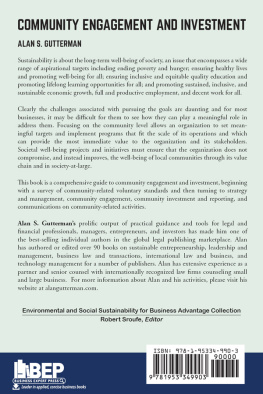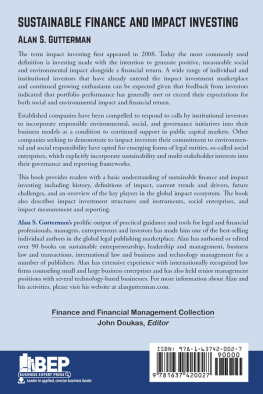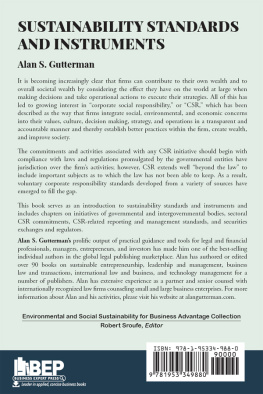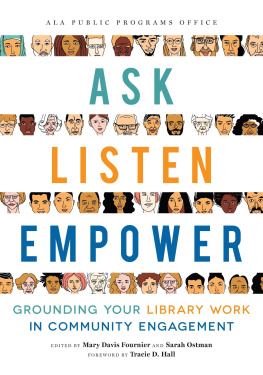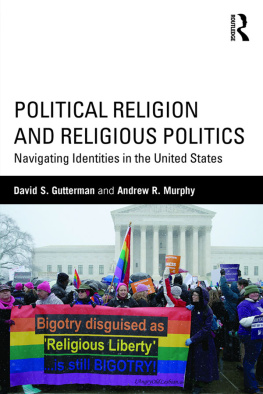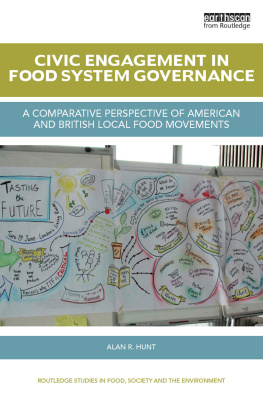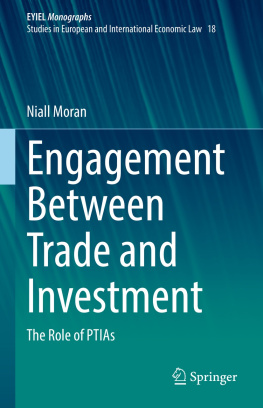Alan S. Gutterman - Community Engagement and Investment
Here you can read online Alan S. Gutterman - Community Engagement and Investment full text of the book (entire story) in english for free. Download pdf and epub, get meaning, cover and reviews about this ebook. year: 2021, publisher: Business Expert Press, genre: Business. Description of the work, (preface) as well as reviews are available. Best literature library LitArk.com created for fans of good reading and offers a wide selection of genres:
Romance novel
Science fiction
Adventure
Detective
Science
History
Home and family
Prose
Art
Politics
Computer
Non-fiction
Religion
Business
Children
Humor
Choose a favorite category and find really read worthwhile books. Enjoy immersion in the world of imagination, feel the emotions of the characters or learn something new for yourself, make an fascinating discovery.
- Book:Community Engagement and Investment
- Author:
- Publisher:Business Expert Press
- Genre:
- Year:2021
- Rating:4 / 5
- Favourites:Add to favourites
- Your mark:
- 80
- 1
- 2
- 3
- 4
- 5
Community Engagement and Investment: summary, description and annotation
We offer to read an annotation, description, summary or preface (depends on what the author of the book "Community Engagement and Investment" wrote himself). If you haven't found the necessary information about the book — write in the comments, we will try to find it.
Community Engagement and Investment — read online for free the complete book (whole text) full work
Below is the text of the book, divided by pages. System saving the place of the last page read, allows you to conveniently read the book "Community Engagement and Investment" online for free, without having to search again every time where you left off. Put a bookmark, and you can go to the page where you finished reading at any time.
Font size:
Interval:
Bookmark:

Community Engagement and Investment
Community Engagement and Investment
Alan S. Gutterman

Community Engagement and Investment
Copyright Business Expert Press, LLC, 2021.
Cover design by Charlene Kronstedt
Interior design by Exeter Premedia Services Private Ltd., Chennai, India
All rights reserved. No part of this publication may be reproduced, stored in a retrieval system, or transmitted in any form or by any meanselectronic, mechanical, photocopy, recording, or any other except for brief quotations, not to exceed 400 words, without the prior permission of the publisher.
First published in 2021 by
Business Expert Press, LLC
222 East 46th Street, New York, NY 10017
www.businessexpertpress.com
ISBN-13: 978-1-95334-990-3 (paperback)
ISBN-13: 978-1-95334-991-0 (e-book)
Business Expert Press Environmental and Social Sustainability for Business Advantage Collection
Collection ISSN: 2327-333X (print)
Collection ISSN: 2327-3348 (electronic)
First edition: 2021
10 9 8 7 6 5 4 3 2 1
Description
Sustainability is about the long-term well-being of society, an issue that encompasses a wide range of aspirational targets including ending poverty and hunger; ensuring healthy lives, and promoting well-being for all; ensuring inclusive and equitable quality education and promoting lifelong learning opportunities for all; and promoting sustained, inclusive, and sustainable economic growth, full and productive employment and decent work for all. Clearly the challenges associated with pursuing the goals are daunting and for most businesses, it may be difficult for them to see how they can play a meaningful role in address them. While it is common for society to be identified as an organizational stakeholder, the reality is that one company cannot, acting on its own, achieve all the goals associated with societal well-being. However, every company, regardless of its size, can make a difference in some small, yet meaningful way, in the communities in which they operate, and more and more attention is being focused on the impact that companies have within their communities. Focusing on the community level allows an organization to set meaningful targets and implement programs that fit the scale of its operations and which can provide the most immediate value to the organization and its stakeholders. Societal well-being projects and initiatives must ensure that the organization does not compromise, and instead improves, the well-being of local communities through its value chain and in societyat-large. This book is a comprehensive guide to community engagement and investment, beginning with a survey of community-related voluntary standards and then turning to strategy and management, community engagement, community investment, and reporting and communications on community-related activities.
Keywords
community; engagement; community investment; community development; corporate philanthropy; CSR
Contents
Sustainability is about the long-term well-being of society, an issue that encompasses a wide range of aspirational targets including the sustainable development goals (SDGs) of the 2030 Agenda for Sustainable Development adopted by world leaders that went into effect on January 1, 2016. The SDGs, which include, among other things, ending poverty and hunger, ensuring healthy lives and promoting well-being for all, ensuring inclusive and equitable quality education and promoting lifelong learning opportunities for all, are based on the recognition that society in general is vulnerable to a number of significant environmental and social risks including failure of climate-change mitigation and adaptation, major biodiversity loss and ecosystem collapse, human-made environmental planning and disasters (e.g., oil spills), failure of urban planning, food crises, rapid and massive spread of infectious diseases, and profound social instability. Clearly the challenges described above are daunting and for most businesses it may be difficult for them to see how they can play a meaningful role in address them. While it is common for society to be identified as an organizational stakeholder, the reality is that one company cannot, acting on its own, achieve all the goals associated with societal well-being. However, every company, regardless of its size, can make a difference in some small, yet meaningful way, in the communities in which they operate, and more and more attention is being focused on the impact that companies have within their communities. Focusing on the community level allows an organization to set meaningful targets and implement programs that fit the scale of its operations and which can provide the most immediate value to the organization and its stakeholders.
While businesses generally benefit their communities by improving the standard of living and providing community members with products and services that fulfill their needs, companies can also contribute to society through philanthropy and corporate social responsibility (CSR). Philanthropy can take many forms and includes donations of cash, products, and employee time (i.e., volunteering) to charities and other nonprofit groups. Some companies enjoy engaging in cause-related marketing, which is essentially a partnership between a company and a nonprofit that calls for the business to market its products with a promise that a portion of the sales will be donated to the nonprofit. This strategy certainly benefits the nonprofit; however, the company obviously hopes that it will see a positive uptick in sales and be able to add to its customer base. CSR initiatives vis--vis the community includes recruiting and training disabled veterans and providing flexible schedules and benefits to Olympic athletes to support their training activities.
While the potential benefits of community engagement and investment for businesses are often framed as being readily apparent, it is useful to consider ideas about the specific aims and objectives of corporate community involvement. One comprehensive list included making people inside and outside the community aware of various problems in the community; ensuring that investment and development efforts occur across all sectors of the community and in multiple areas including education, health, recreation, and employment; motivating members of the community to participate in community welfare programs; providing equal opportunities within the community for access to education, health, and other facilities necessary for better well-being; building confidence among community members to help themselves and others; generating new ideas and changing patterns of life within the community in positive ways that do not negatively interfere with traditions and culture; bringing social reforms into the community; promoting social justice; developing effective methods to solve community programs including better communications between community members and local governments; and creating interest in community welfare among community members and mobilizing those members to participate in the collective work for community development.
The importance of organizational attention to its communities is illustrated by the inclusion of community involvement and development among the core subjects (along with organizational governance, human In the overview of the subject included in ISO 26000, the need for organizations to focus on community involvement and development was explained as follows:
Font size:
Interval:
Bookmark:
Similar books «Community Engagement and Investment»
Look at similar books to Community Engagement and Investment. We have selected literature similar in name and meaning in the hope of providing readers with more options to find new, interesting, not yet read works.
Discussion, reviews of the book Community Engagement and Investment and just readers' own opinions. Leave your comments, write what you think about the work, its meaning or the main characters. Specify what exactly you liked and what you didn't like, and why you think so.

